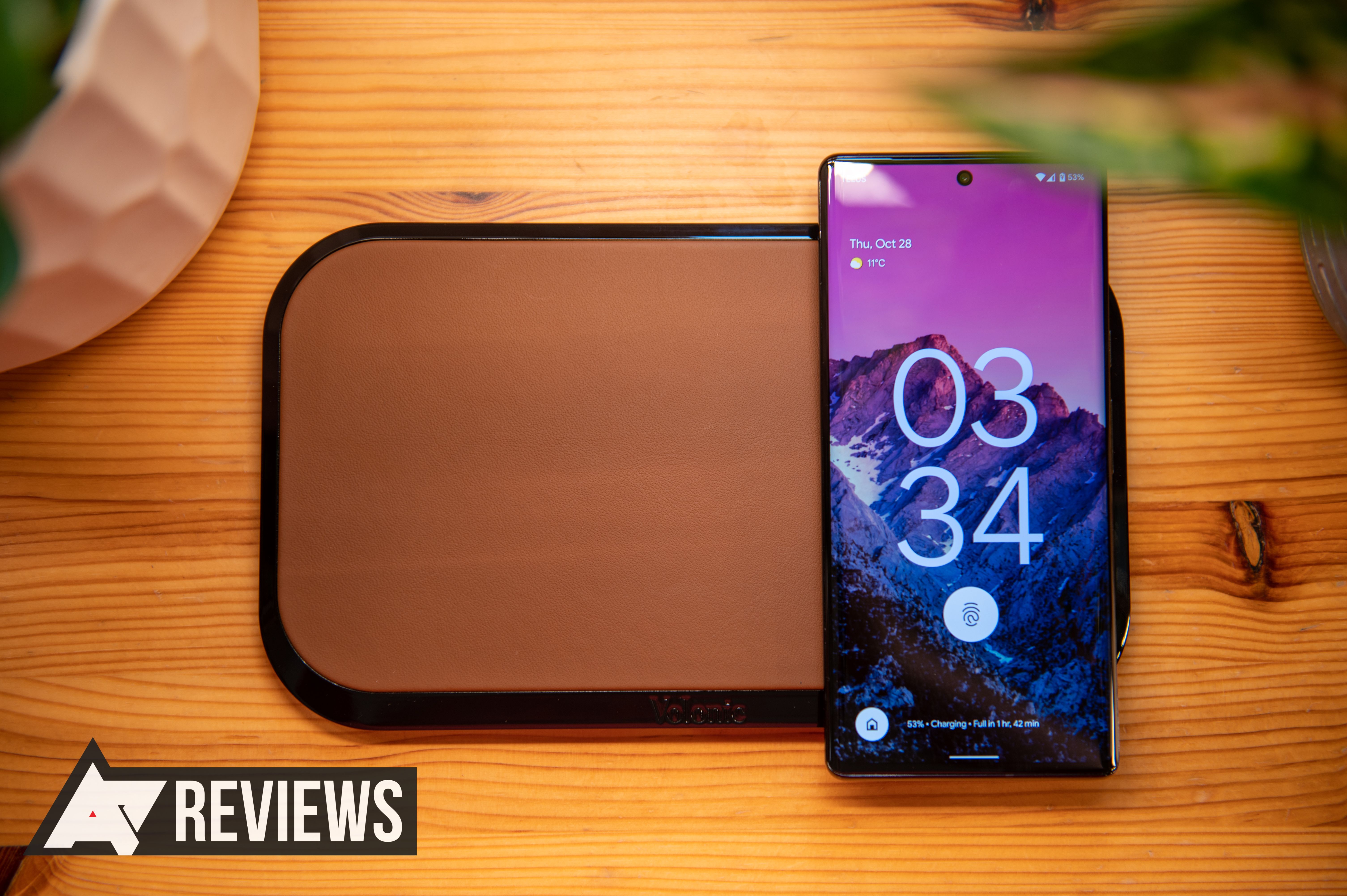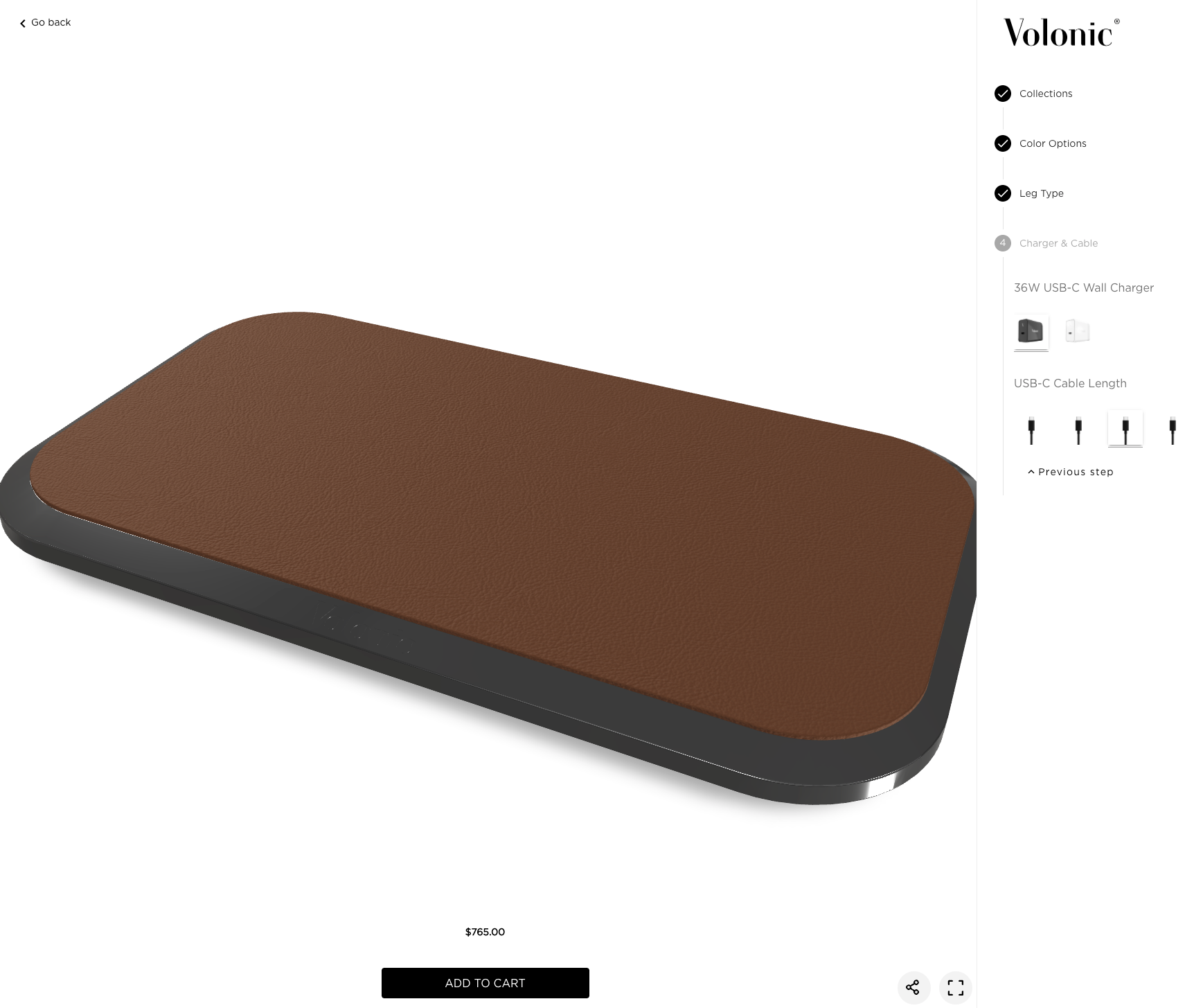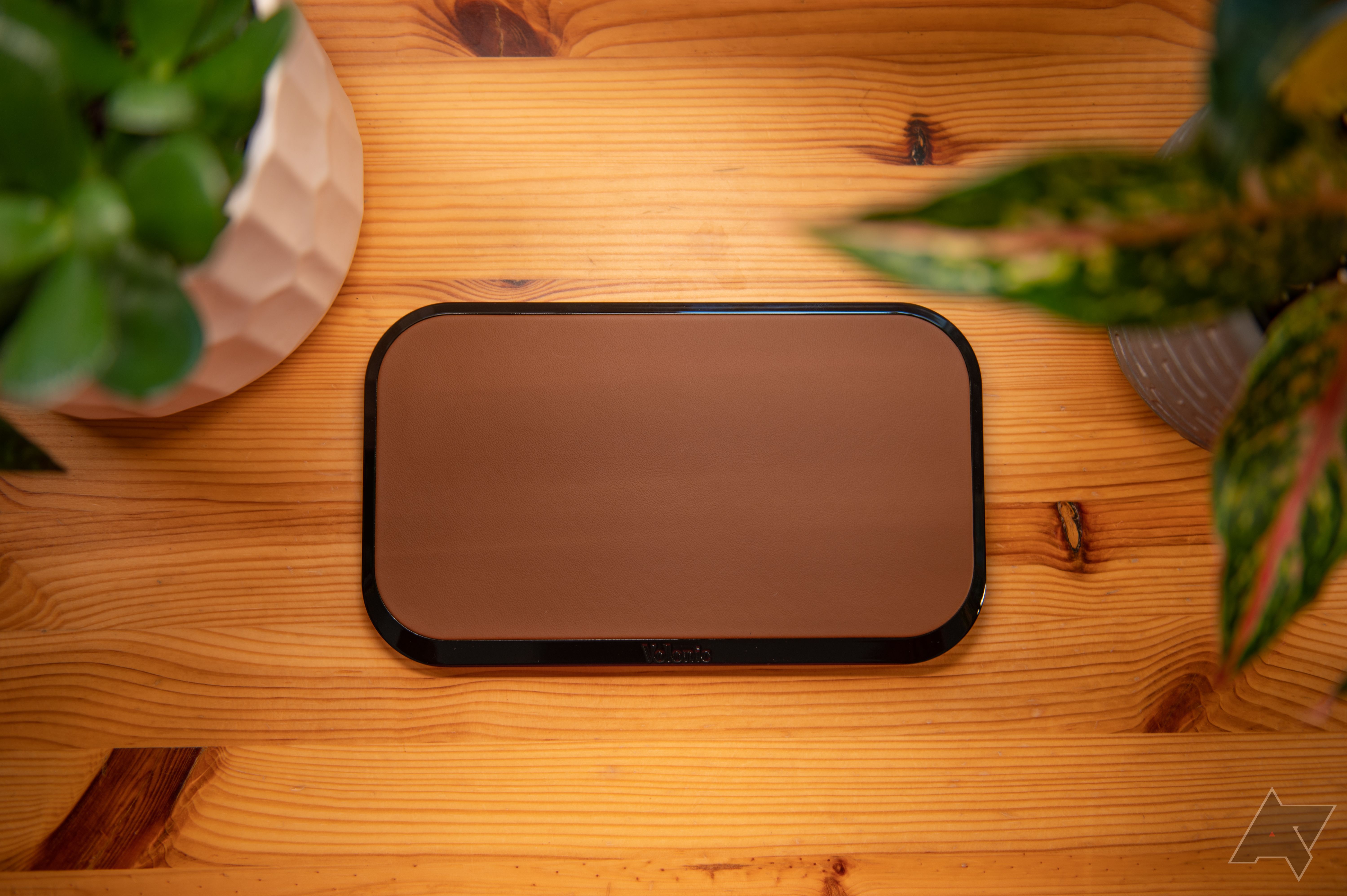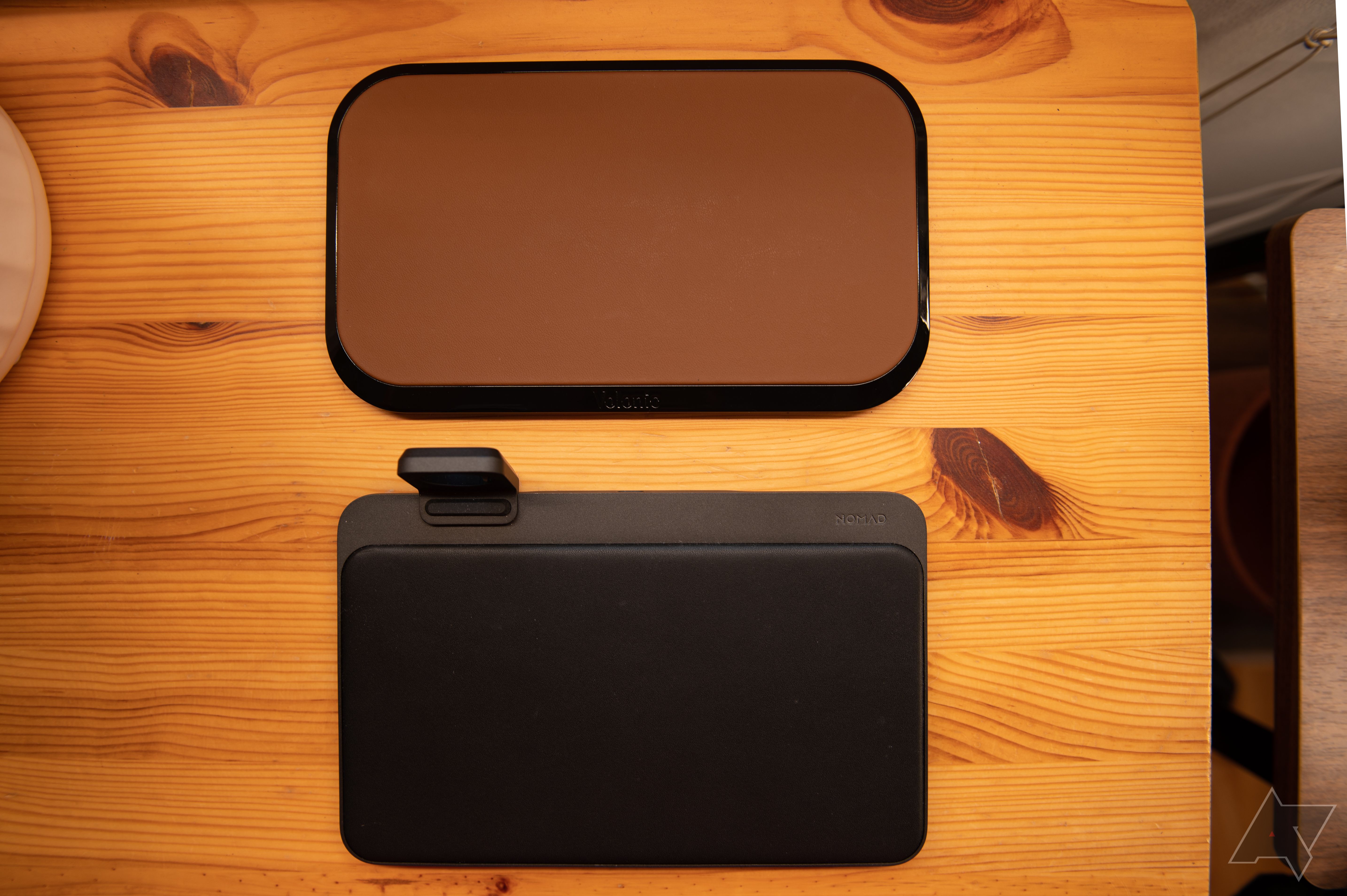There's something novel about reviewing expensive products in categories usually unassociated with luxury. An 18-carat gold-embossed PlayStation 5 that costs over $350,000. A $1400 Apple Watch with an Hermes band. A $600 wireless charger.
I've never touched the first two products mentioned above, but I have, sitting in front of me right now, taunting me with its excess, that third option — a wireless charger that costs more than many of the phones I've purchased over the years. It's not something I'd recommend to anyone who respects their bank account, but it's an absolute cinch to use, and a joy to look at.
Volonic Valet 3
This is not an accessory you need, but Volonic, which was founded by one of the former founders of Mophie, has created a damn fine product that I am happy to look at every day, even when there aren't three phones charging on top of it.
- Brand: Volonic
- Qi-Certified: Yes (uses Aira Freepower)
- Speed: 22.5W total, up to 7.5W per device
- Dimensions: 230 x 135 x 14mm (9.05 x 5.32 x 0.57in)
- Weight: 692g (1.5lbs)
- Charges up to three devices at once, including phones, wireless earbuds and some smartwatches
- One of the nicest desk accessories I've ever seen
- Customization experience is fun
- Comes with everything you need in the box, including 36W wall plug and high-quality USB-C cable
- Very, very expensive
Volonic Valet 3: Design, hardware, and what's in the box
There isn't much to the Volonic Valet 3, and that's by design. It's a rounded rectangle nine inches by five inches, with an aluminum border taking up the outer perimeter before giving way to the cover color and fabric of your choice. My particular unit has a glossy "Grand Piano" frame, along with "Brown Mercedes Nappa" full-grain leather, though you can build yours in any variety of materials, including 13 Alcantara options ranging from black to bright orange, and eight leather varieties including a green "Lamborghini" leather that, if I were a bit braver, I would have loved to try.
You can also customize the rubber legs that sit on your desk, from standard nubs to diamond shapes, as well as customize the length of the USB-C cable that plugs into the also-branded Volonic 36-watt charger.
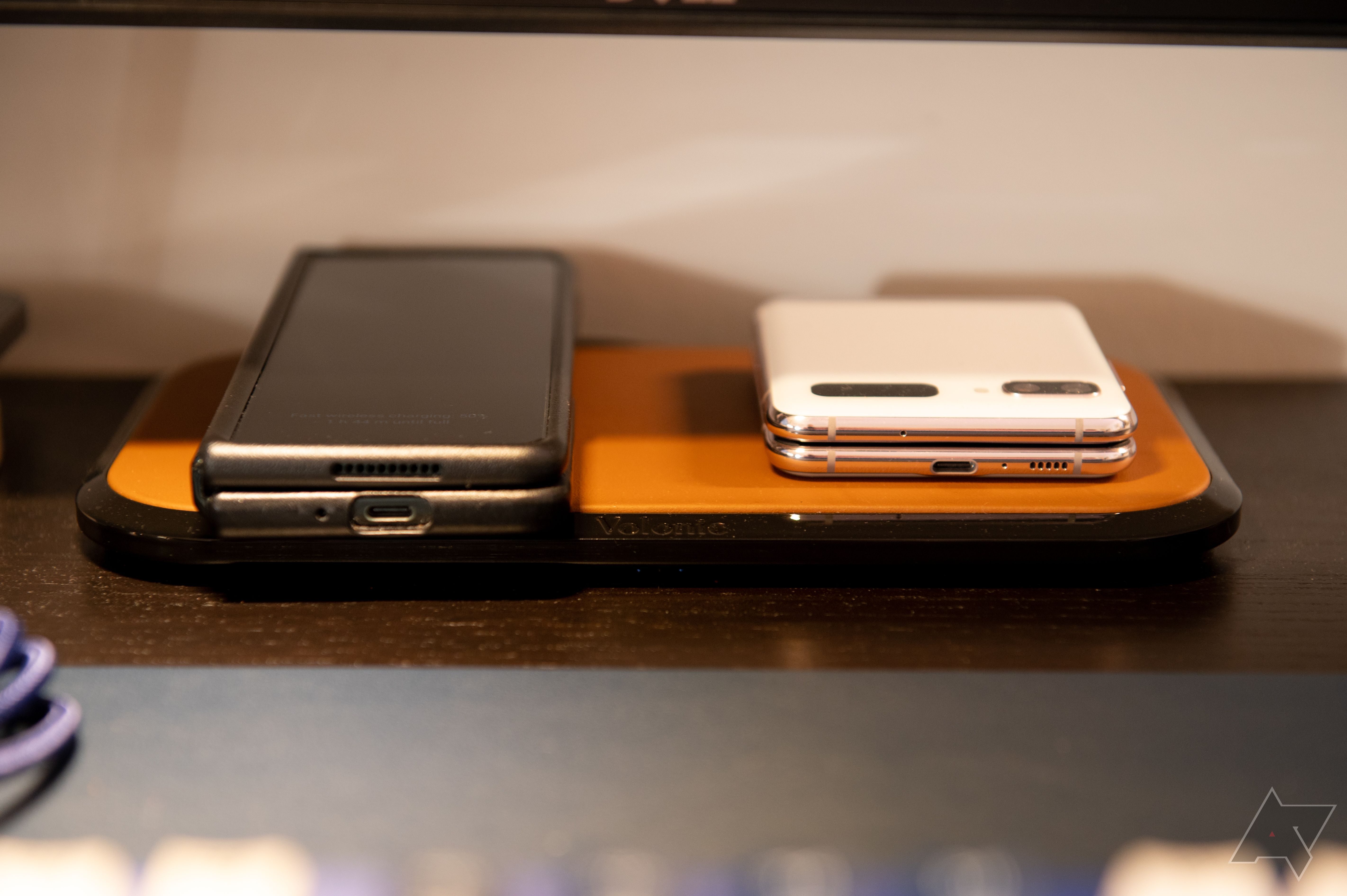
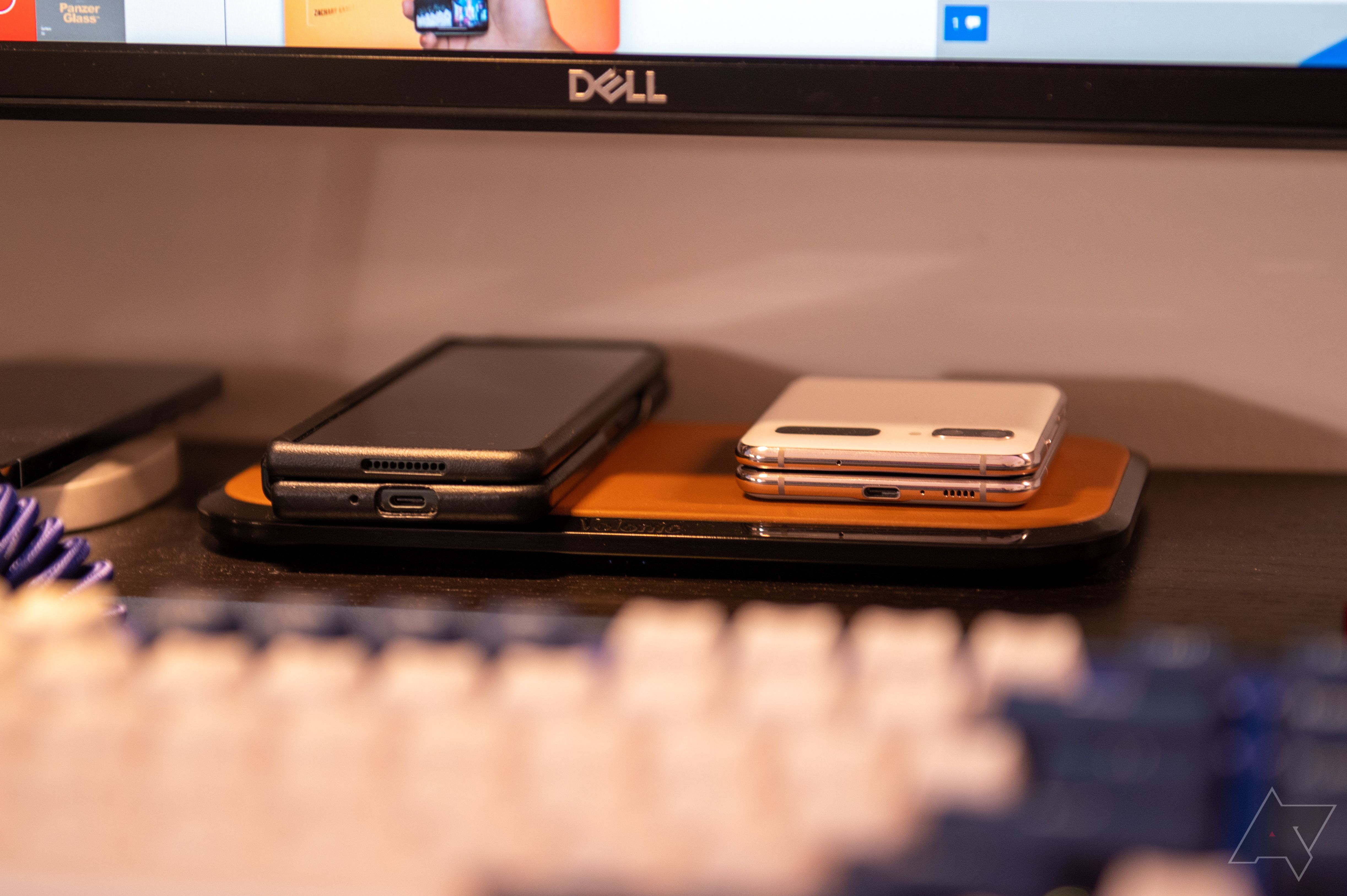
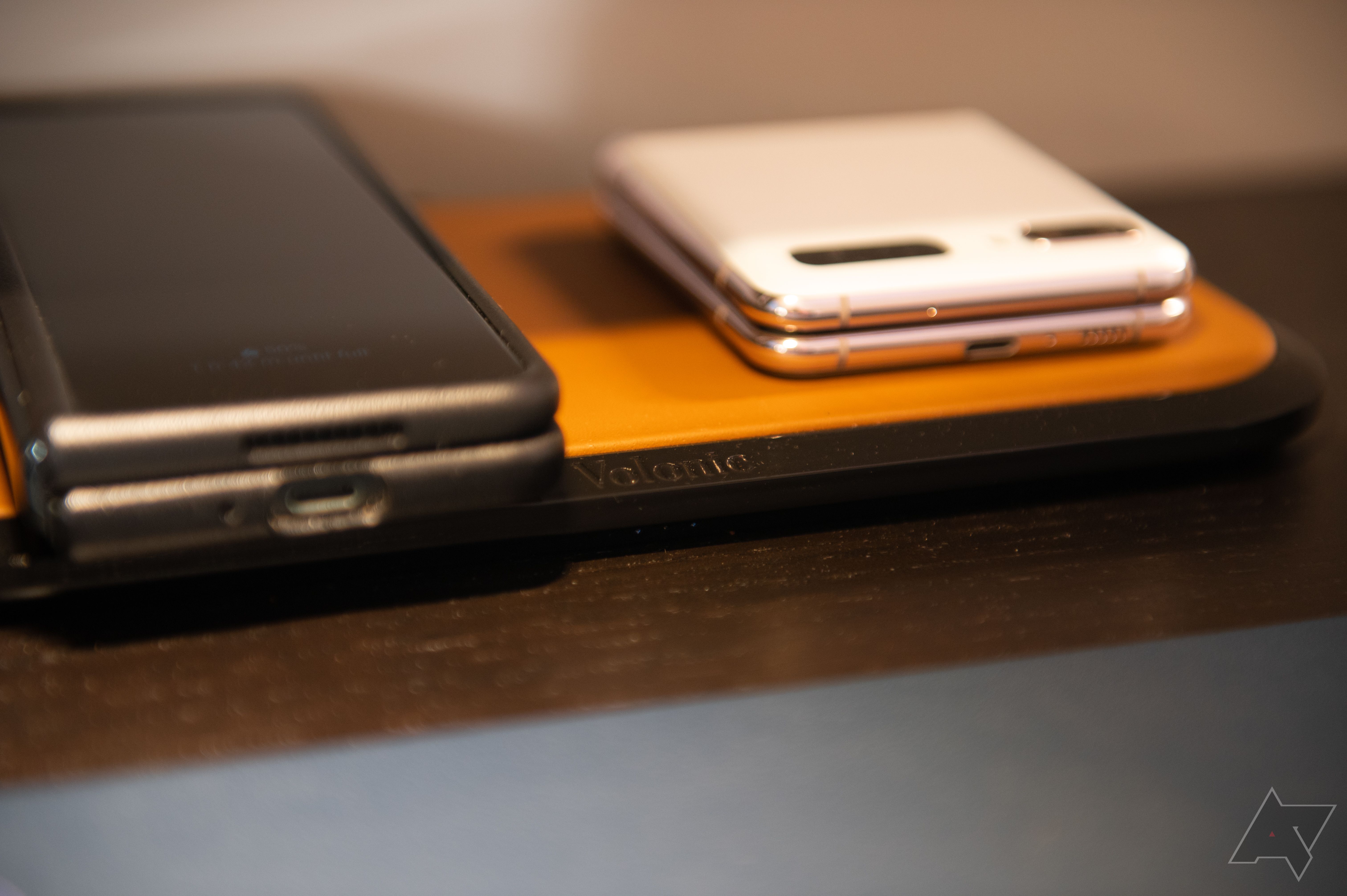
The Valet 3 looks like an oversized wireless charger because that's exactly what it is. If you're heard of Apple's now-canceled AirPower project, you know exactly what the Valet 3 can do: charge up to three devices at one time in almost any orientation (within reason). It can do this because it's using Aira's FreePower technology underneath, and from what I can tell, it's only the second brand to use it after Nomad's Base Station Pro. In this configuration, FreePower uses 18 Qi wireless charging coils arrayed around the pad, intelligently switching between them when it detects a compatible device above it. While the unit can technically push 22.5 watts in total, it's limited to 7.5 watts per device, and that's using Apple's custom Qi integration; Android devices max out at five watts per charge.
But the Valet 3 works as advertised, and once you have it set up you can plop on a few devices — a couple of phones and a pair of wireless earbuds, for example — and just leave them there. You don't really have to worry about orientation or placement, though with three larger phones you may have to line them up just right to get them all working at once.
Aside from the anywhere nature of wireless charging, FreePower, and by extension the Valet 3, also supports a feature most other wireless chargers don't: firmware updates. Specifically, there's a tiny custom controller that houses an upgradeable firmware to improve the experience over time. While I've yet to upgrade the firmware on the Valet 3, I did upgrade it on the Nomad Base Station Pro shortly after it was released last year because it was incompatible with Google's Pixel lineup; it now works great with all of them.
Volonic Valet 3: The price of convenience
Now, there's inherent value in having an oversized wireless charging pad that tops up three devices at once in any orientation. But the Nomad Base Station Pro already does this for $200, and there are likely many other wireless chargers coming down the road powered by Aira's FreePower technology. The Valet 3 is a luxury good that leans heavily into its value-as-an-object experience. From the customizable elements to the focus on premium materials, spending over $600 on a wireless charger is likely not on most people's wish lists, but there's a certain population that wouldn't scoff at the number, and would appreciate the fine leather grain alongside on a bedside table or entrance hall sideboard.
And even spending $200 on something like the Nomad Base Station Pro is a bit rich when you can get three faster, more attractive wireless chargers for a quarter of the price. Yes, there is inherent convenience built into the idea of only needing to take one wireless charger with you on a trip, or offering a single landing spot for all of one's Qi-compatible gadgets as they walk in the door, but I don't think, beyond the impressive technology contained within, there's much value in this solution.
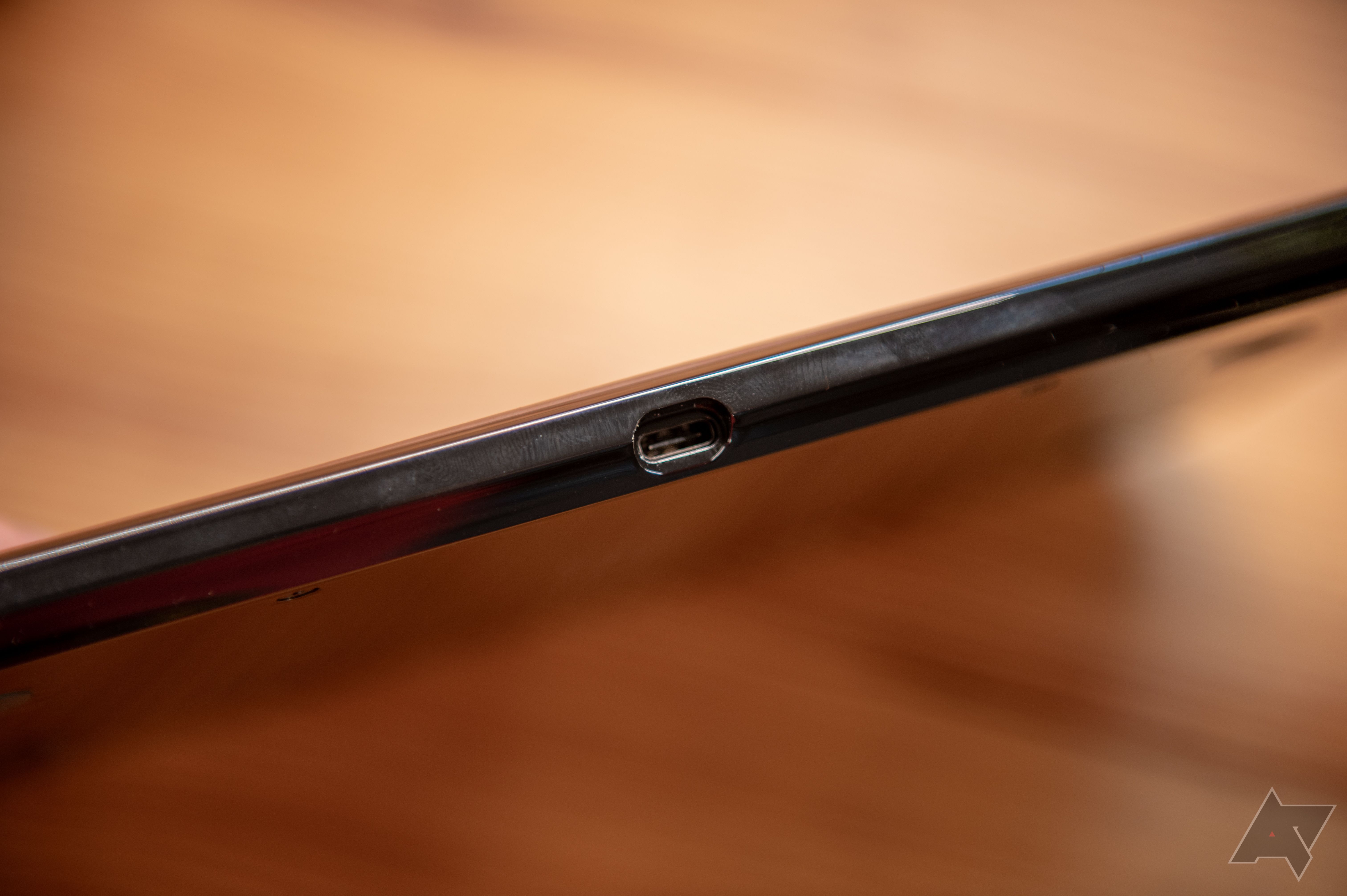
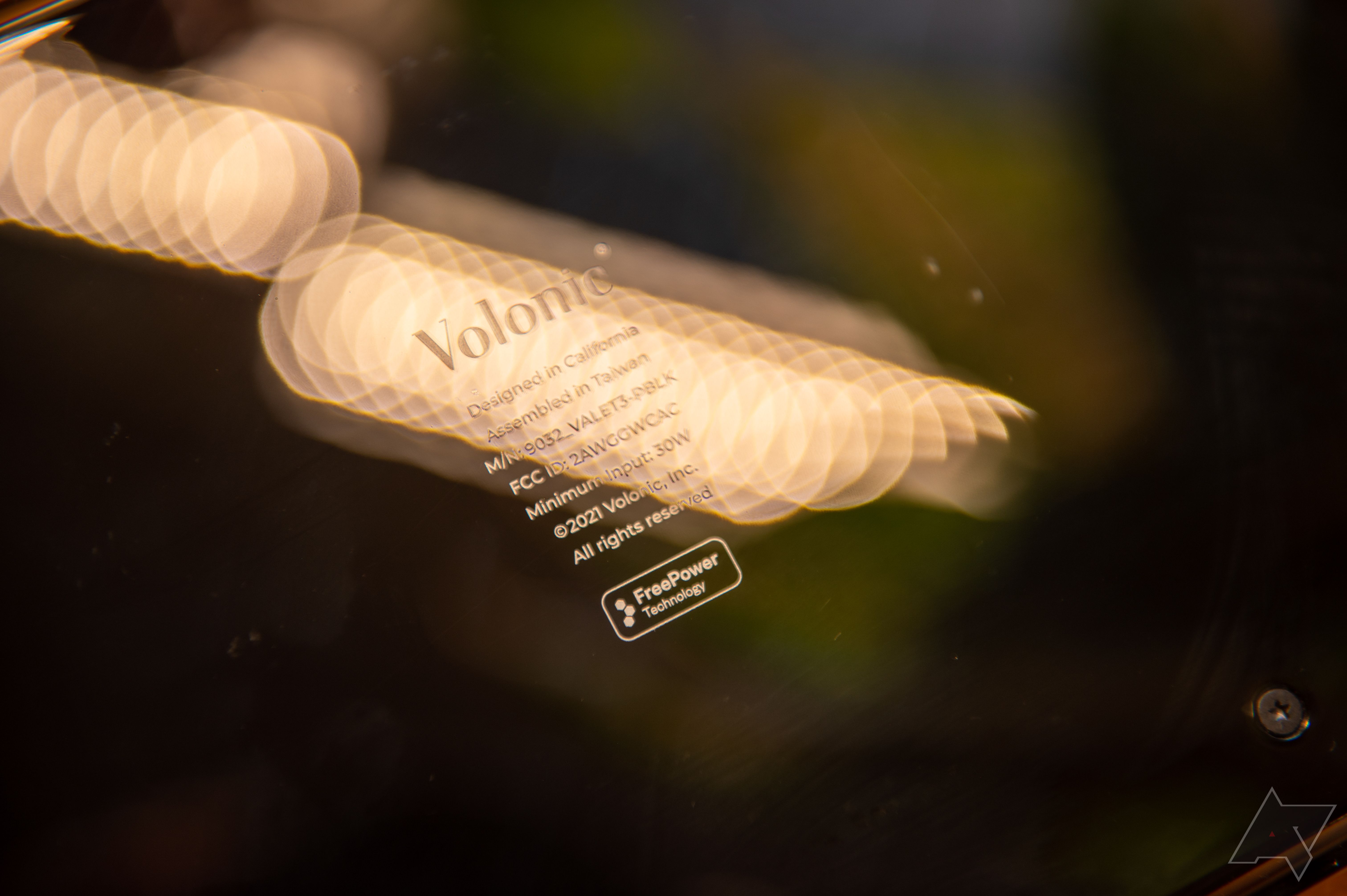
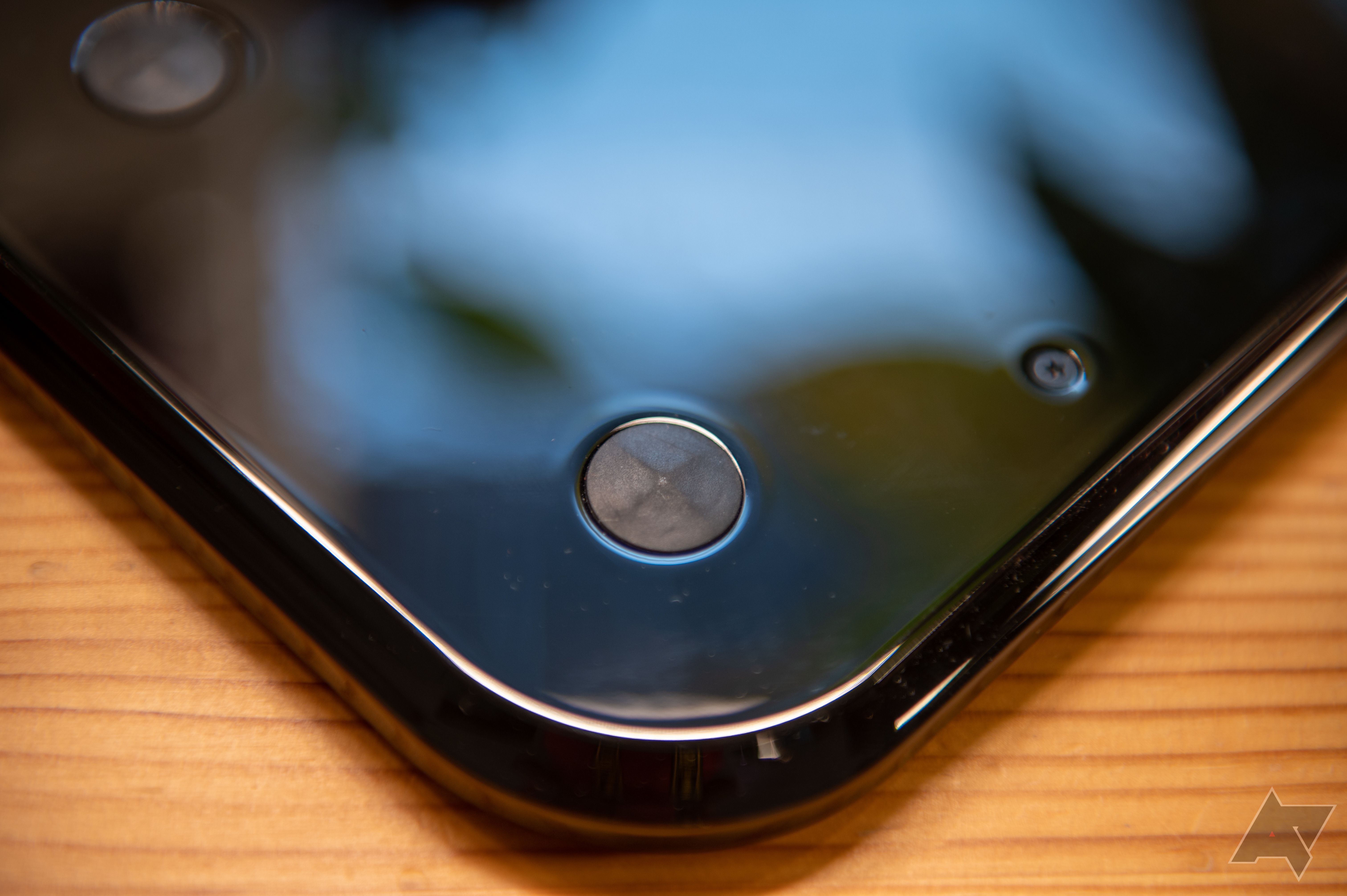
The main issue is speed: Qi charging is limited to five watts per device if there's anything other than an Apple logo on the connected device, and those speeds are pitifully slow if you are doing anything but passively charging throughout the day. The Valet 3 takes nearly four hours to fully charge most modern smartphones from dead — even if there's only one device connected to the pad. Perhaps future versions of Aira's FreePower will adopt more dynamic versions of the Qi standard, including the Extended Power Profile, which raised the bar from five watts to 15W and is beginning to be supported by a number of devices. Even Google, which brought EPP to the mainstream with the Pixel 4, is building on the Qi standard with a 23W charging profile when the Pixel 6 Pro is paired with its second-generation Pixel Stand. Other companies, like OPPO and OnePlus, have achieved top speeds of 50 watts, with their own proprietary standards.
This is all to say that as objects, products like the Valet 3 and other multi-device wireless chargers, have different priorities than many of the pads and stands we'd typically recommend. But if convenience — and aesthetics — are prioritized over speed, they're not a bad option.
Volonic Valet 3: Should you buy it?
Probably not. Unless you really want a wireless charger that matches the rest of your fine leather accouterments or absolutely just need to show off the depth of your pocketbook, there are much, much more affordable options out there. Even among the current lineup of multi-device wireless chargers, the Valet 3 is in a price category of its own, and because it uses Aira's FreePower technology as a base, expect a quick commodification and subsequent price drop in the coming years.
Still, I have to hand it to Volonic, a tiny company with an extremely focused product portfolio (the Valet 3 is its only product for sale right now) that makes the entire curation and purchase process about as easy and enjoyable as designing a very expensive, custom wireless charger can be.
Buy it if...
- You have lots of money
- You typically charge more than one device at a time
- You don't mind waiting a long time for devices to trickle charge
Don't buy it if...
- Literally any other reason

